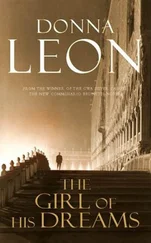Donna Tartt - The Goldfinch
Здесь есть возможность читать онлайн «Donna Tartt - The Goldfinch» весь текст электронной книги совершенно бесплатно (целиком полную версию без сокращений). В некоторых случаях можно слушать аудио, скачать через торрент в формате fb2 и присутствует краткое содержание. Год выпуска: 2013, ISBN: 2013, Издательство: Hachette Digital, Inc., Жанр: Современная проза, на английском языке. Описание произведения, (предисловие) а так же отзывы посетителей доступны на портале библиотеки ЛибКат.
- Название:The Goldfinch
- Автор:
- Издательство:Hachette Digital, Inc.
- Жанр:
- Год:2013
- ISBN:0316055433
- Рейтинг книги:4.5 / 5. Голосов: 6
-
Избранное:Добавить в избранное
- Отзывы:
-
Ваша оценка:
- 100
- 1
- 2
- 3
- 4
- 5
The Goldfinch: краткое содержание, описание и аннотация
Предлагаем к чтению аннотацию, описание, краткое содержание или предисловие (зависит от того, что написал сам автор книги «The Goldfinch»). Если вы не нашли необходимую информацию о книге — напишите в комментариях, мы постараемся отыскать её.
The Goldfinch — читать онлайн бесплатно полную книгу (весь текст) целиком
Ниже представлен текст книги, разбитый по страницам. Система сохранения места последней прочитанной страницы, позволяет с удобством читать онлайн бесплатно книгу «The Goldfinch», без необходимости каждый раз заново искать на чём Вы остановились. Поставьте закладку, и сможете в любой момент перейти на страницу, на которой закончили чтение.
Интервал:
Закладка:
“Connected to what?” I said, in a voice that came out sounding far too nasty.
She looked nonplussed. “To other people! And—” she gestured at the window—“the world around you! Listen,” she said, in her gentlest, most hypnotically-soothing voice, “I know that you and your mother had an incredibly close bond. I spoke to her. I saw the two of you together. And I know exactly how much you must miss her.”
No you don’t, I thought, staring her insolently in the eye.
She gave me an odd look. “You’d be surprised, Theo,” she said, leaning back in her shawl-draped chair, “what small, everyday things can lift us out of despair. But nobody can do it for you. You’re the one who has to watch for the open door.”
Though I knew she meant well, I’d left her office head down, tears of anger stinging my eyes. What the hell did she know about it, the old bat? Mrs. Swanson had a gigantic family—about ten kids and thirty grandkids, to judge from the photos on her wall; Mrs. Swanson had a huge apartment on Central Park West and a house in Connecticut and zero idea what it was like for a plank to snap so it was all gone in a minute. Easy enough for her to sit back comfortably in her hippie armchair and ramble about extracurricular activities and open doors.
And yet, unexpectedly, a door had opened, and in a most unlikely quarter: Hobie’s workshop. “Helping” with the chair (which had basically involved me standing by while Hobie ripped the seat up to show me the worm damage, slapdash repairs, and other hidden horrors under the upholstery) had rapidly turned into two or three oddly absorbing afternoons a week, after school: labeling jars, mixing rabbit-skin glue, sorting through boxes of drawer fittings (“the fiddly bits”) or sometimes just watching him turn chair legs on the lathe. Though the upstairs shop stayed dark, with the metal gates down, still, in the shop-behind-the-shop, the tall-case clocks ticked, the mahogany glowed, the light filtered in a golden pool on the dining room tables, the life of the downstairs menagerie went on.
Auction houses all over the city called him, as well as private clients; he restored furniture for Sotheby’s, for Christie’s, for Tepper, for Doyle. After school, amidst the drowsy tick of the tall-case clocks, he taught me the pore and luster of different woods, their colors, the ripple and gloss of tiger maple and the frothed grain of burled walnut, their weights in my hand and even their different scents—“sometimes, when you’re not sure what you have, it’s easiest just to take a sniff”—spicy mahogany, dusty-smelling oak, black cherry with its characteristic tang and the flowery, amber-resin smell of rosewood. Saws and counter-sinks, rasps and rifflers, bent blades and spoon blades, braces and mitre-blocks. I learned about veneers and gilding, what a mortise and tenon was, the difference between ebonized wood and true ebony, between Newport and Connecticut and Philadelphia crest rails, how the blocky design and close-cropped top of one Chippendale bureau rendered it inferior to another bracket-foot of the same vintage with its fluted quarter columns and what he liked to call the “exalted” proportions of the drawer ratio.
Downstairs—weak light, wood shavings on the floor—there was something of the feel of a stable, great beasts standing patiently in the dim. Hobie made me see the creaturely quality of good furniture, in how he talked of pieces as “he” and “she,” in the muscular, almost animal quality that distinguished great pieces from their stiff, boxy, more mannered peers and in the affectionate way he ran his hand along the dark, glowing flanks of his sideboards and lowboys, like pets. He was a good teacher and very soon, by walking me through the process of examination and comparison, he’d taught me how to identify a reproduction: by wear that was too even (antiques were always worn asymmetrically); by edges that were machine-cut instead of hand-planed (a sensitive fingertip could feel a machine edge, even in poor light); but more than that by a flat, dead quality of wood, lacking a certain glow: the magic that came from centuries of being touched and used and passed through human hands. To contemplate the lives of these dignified old highboys and secretaries—lives longer and gentler than human life—sank me into calm like a stone in deep water, so that when it was time to go I walked out stunned and blinking into the blare of Sixth Avenue, hardly knowing where I was.
More than the workshop (or the “hospital,” as Hobie called it) I enjoyed Hobie: his tired smile, his elegant big-man’s slouch, his rolled sleeves and his easy, joking manner, his workman’s habit of rubbing his forehead with the inside of his wrist, his patient good humor and his steady good sense. But though our talk was casual and sporadic there was never anything simple about it. Even a light “How are you” was a nuanced question, without it seeming to be; and my invariable answer (“Fine”) he could read easily enough without my having to spell anything out. And though he seldom pried, or questioned, I felt he had a better sense of me than the various adults whose job it was to “get inside my head” as Enrique liked to put it.
But—more than anything—I liked him because he treated me as a companion and conversationalist in my own right. It didn’t matter that sometimes he wanted to talk about his neighbor who had a knee replacement or a concert of early music he’d seen uptown. If I told him something funny that happened at school, he was an attentive and appreciative audience; unlike Mrs. Swanson (who froze and looked startled when I made a joke) or Dave (who chuckled, but awkwardly, and always a beat too late), he liked to laugh, and I loved it when he told me stories of his own life: raucous late-marrying uncles and busybody nuns of his childhood, the third-rate boarding school on the Canadian border where his teachers had all been drunks, the big house upstate that his father kept so cold there was ice on the inside of the windows, gray December afternoons reading Tacitus or Motley’s Rise of the Dutch Republic. (“I loved history, always. The road not taken! My grandest boyhood ambition was to be a professor of history at Notre Dame. Although what I do now is just a different way of working with history, I suppose.”) He told me about his blind-in-one-eye canary rescued from a Woolworth’s who woke him singing every morning of his boyhood; the bout of rheumatic fever that kept him in bed for six months; and the queer little antique neighborhood library with frescoed ceilings (“torn down now, alas”) where he’d gone to get away from his house. About Mrs. De Peyster, the lonely old heiress he’d visited after school, a former Belle of Albany and local historian who clucked over Hobie and fed him Dundee cake ordered from England in tins, who was happy to stand for hours explaining to Hobie every single item in her china cabinet and who had owned, among other things, the mahogany sofa—rumored to have belonged to General Herkimer—that got him interested in furniture in the first place. (“Although I can’t quite picture General Herkimer lounging on that decadent old Grecian-looking article.”) About his mother, who had died shortly after his three-days-old sister, leaving Hobie an only child; and about the young Jesuit father, a football coach, who—telephoned by a panicky Irish housemaid when Hobie’s father was beating Hobie “to flinders practically” with a belt—had dashed to the house, rolled up his sleeves, and punched Hobie’s father to the ground. (“Father Keegan! He was the one who came to the house that time when I had rheumatic fever, to give me communion. I was his altar boy—he knew what the story was, he’d seen the stripes on my back. There’ve been so many priests lately naughty with the boys, but he was so good to me—I always wonder what happened to him, I’ve tried to find him and I can’t. My father telephoned the archbishop and next thing you knew, done and dusted, they’d shipped him off to Uruguay.”) It was all very different from the Barbours’, where—despite the general atmosphere of kindness—I was either lost in the throng or else the uncomfortable subject of formal inquiry. I felt better knowing he was only a bus ride away, a straight shot down Fifth Avenue; and in the night when I woke up jarred and panicked, the explosion plunging through me all over again, sometimes I could lull myself back to sleep by thinking of his house, where without even realizing it you slipped away sometimes into 1850, a world of ticking clocks and creaking floorboards, copper pots and baskets of turnips and onions in the kitchen, candle flames leaning all to the left in the draft of an opened door and tall parlor windows billowing and swagged like ball gowns, cool quiet rooms where old things slept.
Читать дальшеИнтервал:
Закладка:
Похожие книги на «The Goldfinch»
Представляем Вашему вниманию похожие книги на «The Goldfinch» списком для выбора. Мы отобрали схожую по названию и смыслу литературу в надежде предоставить читателям больше вариантов отыскать новые, интересные, ещё непрочитанные произведения.
Обсуждение, отзывы о книге «The Goldfinch» и просто собственные мнения читателей. Оставьте ваши комментарии, напишите, что Вы думаете о произведении, его смысле или главных героях. Укажите что конкретно понравилось, а что нет, и почему Вы так считаете.










